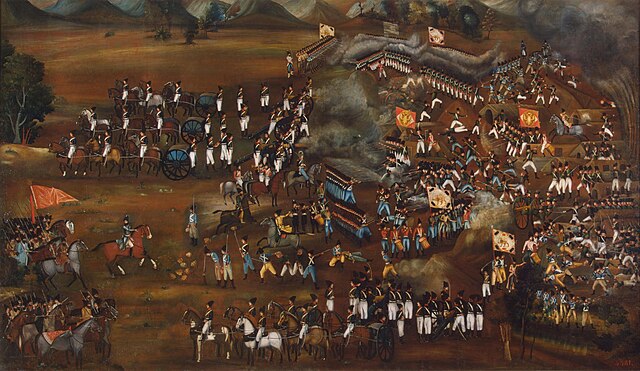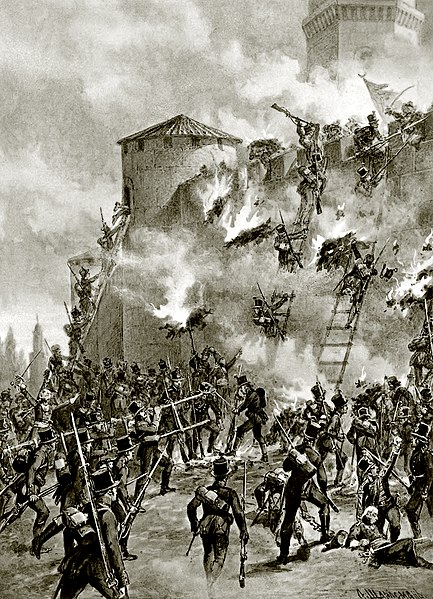Russo-Persian War (1826–1828)
The Russo-Persian War of 1826–1828 was the last major military conflict between the Russian Empire and Qajar Iran, which was fought over territorial disputes in the South Caucasus region.
Contemporary illustration of the Battle of Ganja
Portrait of the Iranian crown prince Abbas Mirza, who commanded the Iranian forces
Painting of the Battle of Ganja, made by Franz Roubaud in 1887
Painting of the Capture of Erivan, made by Franz Roubaud in 1893
Qajar Iran, also referred to as Qajar Persia, the Qajar Empire, Sublime State of Persia, officially the Sublime State of Iran and also known as the Guarded Domains of Iran, was an Iranian state ruled by the Qajar dynasty, which was of Turkic origin, specifically from the Qajar tribe, from 1789 to 1925. The Qajar family took full control of Iran in 1794, deposing Lotf 'Ali Khan, the last Shah of the Zand dynasty, and re-asserted Iranian sovereignty over large parts of the Caucasus. In 1796, Agha Mohammad Khan Qajar seized Mashhad with ease, putting an end to the Afsharid dynasty. He was formally crowned as Shah after his punitive campaign against Iran's Georgian subjects.
Battle of Sultanabad, 13 February 1812. State Hermitage Museum.
Storming of Lankaran, 13 January 1813. Franz Roubaud.
Battle of Ganja, 1826. Franz Roubaud. Part of the collection of the Museum for History, Baku.
A. Sharlmann "Battle of Ganja" during the Russo-Persian War (1804–1813)







